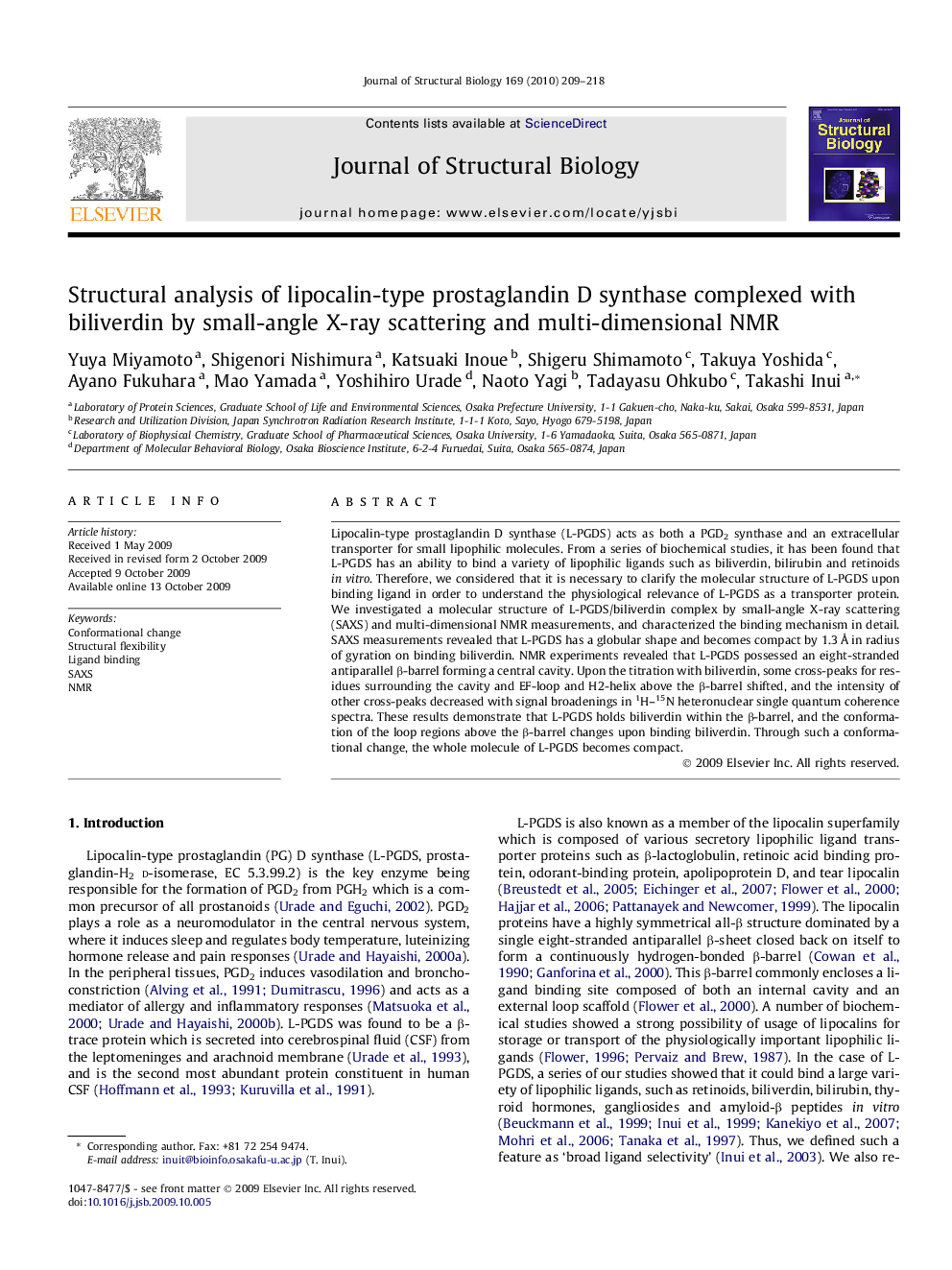| Article ID | Journal | Published Year | Pages | File Type |
|---|---|---|---|---|
| 2828940 | Journal of Structural Biology | 2010 | 10 Pages |
Lipocalin-type prostaglandin D synthase (L-PGDS) acts as both a PGD2 synthase and an extracellular transporter for small lipophilic molecules. From a series of biochemical studies, it has been found that L-PGDS has an ability to bind a variety of lipophilic ligands such as biliverdin, bilirubin and retinoids in vitro. Therefore, we considered that it is necessary to clarify the molecular structure of L-PGDS upon binding ligand in order to understand the physiological relevance of L-PGDS as a transporter protein. We investigated a molecular structure of L-PGDS/biliverdin complex by small-angle X-ray scattering (SAXS) and multi-dimensional NMR measurements, and characterized the binding mechanism in detail. SAXS measurements revealed that L-PGDS has a globular shape and becomes compact by 1.3 Å in radius of gyration on binding biliverdin. NMR experiments revealed that L-PGDS possessed an eight-stranded antiparallel β-barrel forming a central cavity. Upon the titration with biliverdin, some cross-peaks for residues surrounding the cavity and EF-loop and H2-helix above the β-barrel shifted, and the intensity of other cross-peaks decreased with signal broadenings in 1H–15N heteronuclear single quantum coherence spectra. These results demonstrate that L-PGDS holds biliverdin within the β-barrel, and the conformation of the loop regions above the β-barrel changes upon binding biliverdin. Through such a conformational change, the whole molecule of L-PGDS becomes compact.
